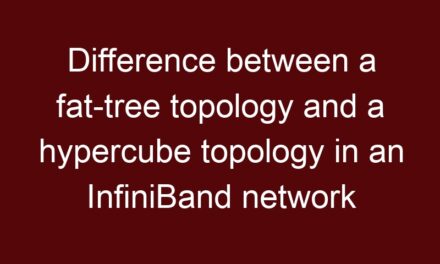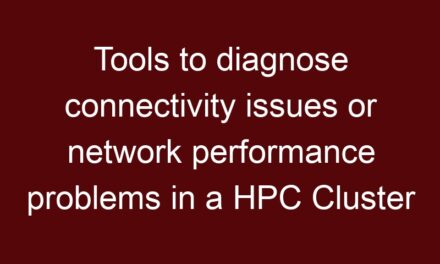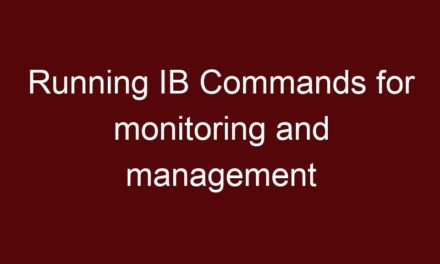Both full bisection and non-blocking topologies are designs used in InfiniBand networks to ensure efficient data communication with minimal congestion and latency. However, they have distinct characteristics that cater to different network requirements. Let’s compare and contrast these two InfiniBand topologies:
Full Bisection InfiniBand Topology:
Definition: A full bisection topology aims to provide enough bandwidth to fully utilize the available links without congestion, even when all possible communication paths are active simultaneously.
Characteristics:
- Bandwidth Allocation: A full bisection topology ensures that the available bandwidth is sufficient to accommodate the maximum potential traffic between any two pairs of nodes in the network. This prevents congestion and minimizes communication delays.
- Scalability: Full bisection networks are suitable for large-scale InfiniBand clusters, where data communication requirements are high and involve many nodes.
- Redundancy: Since each node is connected to multiple other nodes with sufficient bandwidth, full bisection networks inherently offer redundancy and multiple communication paths.
- Latency: Full bisection networks tend to have lower latency compared to other topologies, as data can be transmitted over dedicated links without contention.
Non-Blocking InfiniBand Topology:
Definition: A non-blocking topology ensures that no matter how communication paths are established between pairs of nodes, there are enough available links to handle the traffic without blocking.
Characteristics:
- Switch Architecture: Non-blocking networks often use a combination of switches and crossbar switches to ensure that any two nodes can communicate simultaneously without blocking.
- Port-to-Port Communication: Each node can communicate with any other node without affecting the data transmission on other links, as there are no shared resources.
- Scalability: Non-blocking topologies can scale well with a moderate number of nodes, providing efficient communication paths.
- Redundancy: Similar to full bisection topologies, non-blocking networks inherently provide multiple communication paths, offering redundancy and fault tolerance.
- Latency: The latency in non-blocking topologies is generally low since dedicated paths are available for data transmission.
Comparison:
- Bandwidth vs. Blocking: Full bisection topologies emphasize having sufficient bandwidth for all possible communication paths, while non-blocking topologies emphasize preventing any form of blocking, even if some paths might not be active simultaneously.
- Scalability: Full bisection topologies are well-suited for large clusters, while non-blocking topologies are more suitable for moderately sized clusters where full bisection might be overkill.
- Redundancy: Both topologies provide redundancy through multiple paths, ensuring that network failures can be accommodated.
- Complexity and Cost: Full bisection topologies can be more complex and expensive due to the requirement for abundant bandwidth. Non-blocking topologies can be more cost-effective for networks with moderate communication demands.
In summary, both full bisection and non-blocking InfiniBand topologies aim to provide efficient, low-latency communication. The choice between them depends on the scale of the cluster, the communication requirements, and the available budget for network infrastructure.





